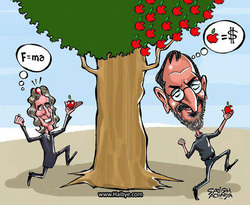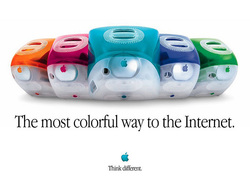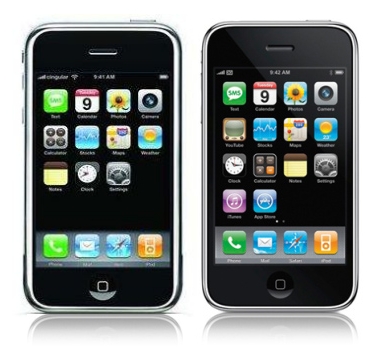
Hot off the presses from today is the opinion from the U.S Court of Appeals for the Federal Circuit, a court that hears a lot of appeals from lower courts where the case involves patents, is the latest opinion in the long-running battle between Apple and Samsung over Samsung’s copying of Apple’s iPhone design. At least one portion of Apple’s asserted intellectual property from its smartphones was deemed unprotectable because the I.P. in question is functional. It seems the apple has fallen from the tree straight onto what is sure to be a frustrated Tim Cook. A little synopsis of the case may help get to the core of the matter a little more quickly: In April 2011, Apple sued Samsung for design patent and trademark infringement, alleging that Samsung’s Android phones and tablets copied several elements of Apple’s phone design and user interface, including the distinctive grid-structure design from Apple’s graphical user interface (or GUI, for the acronym buffs). In August 2012, a jury found that numerous Samsung smartphones infringed Apple’s patents and diluted Apple’s trademark designs for its GUIs, awarding the company $1 billion in damages. This damage award was modified downward a few times to $290 million. In the lower court case, the jury found that Apple’s GUI was a valid trademark, protectable as trade dress. Samsung appealed both that finding and the $290 million damages award last year.
Anybody who has been reading this blog for a while knows about some of the issues that come along with trying to protect trade dress but in case you missed it, here is a little primer on how trade dress (or product packaging, if looking for a less-legal word) is protected as a trademark. Just a quick summary for those who are reading this blog on a few minutes’ allowance: trade dress/product packaging, as a distinctive type of design that is capable of pointing to the company that produced it, is protected as a trademark. This protection exists to promote competition; therefore, it will not be extended to mere designs that are required by a particular product configuration or other functional considerations because to limit other companies from being able to produce an alternative design would just be anti-competitive. Trademark protection is not generally dolled out like candy because the potential term of protection is infinite, making it possible for a company to get a monopoly on something that may not be specific to the company.
Case-in-point, the Apple iPhone interface. By now, anyone who has succumb to the smartphone mania (which includes probably about 99.9% of millennials) is probably fairly familiar with the typical home screen layout of most smartphones, whether Android or Apple. The interface usually includes rows of graphical square icons neatly arranged from top to bottom over a solid-colored background, with more commonly-used icons appearing on the bottom of the screen along a colored line. Because the space on a screen is limited, users have the ability to scroll across different home screens. On each screen the icons are arranged in a similar, grid-like pattern. At the risk of being repetitive (I just want to placate the visual learners!), here is a picture of Apple’s screen:
Where am I going with this copyright reference in a post about trade dress? Just bear with me for a little bit longer. As we have seen in other posts, trademark law refuses to protect certain aspects of a purported trademark because those elements are simply components of a product that are dictated by the product’s design. Said another way, these elements may not do anything to help consumers determine which company made the product. In copyright law, the distinction is between ideas and expression. In trademark law, “idea” is replaced by “functional”; components of a product that are necessary for the product to work cannot be trademarks. Thus, courts have to separate form from function, so to speak. If a product has a distinctive form and the functional components of the product are not being asserted as trademarks, then the “form” part of the product can be protected as a trademark. Courts have created a framework that can be used to determine whether trade dress is truly non-functional and therefore protectable as a trademark:
First, the court looks at whether the design creates some kind of useful or practical advantage to the manufacturer. Generally, trademarkable elements do not provide a useful or practical advantage to the manufacturer. Second, if there are several possible alternative designs for a particular product feature, the feature is not functional and it can function as a trademark. Third, if the company advertises that the useful or practical feature provides some kind of advantage to the consumer, the feature is utilitarian. Finally, a feature is functional if it provides the manufacturer of the product with a manufacturing advantage through a lower cost.
At issue in the Apple case were two types of trade dress: the design of the phone hardware itself with a color display of app icons, and the GUI with various design icons arranged in a grid. The GUI was not the subject of a trademark application, but was instead claimed as a common law trademark. More about that in the Trademark Tidbits section. Unfortunately for Apple, it couldn’t show that its GUI’s were non-functional under ANY of the above standards. Apple claimed that its phone was developed to evoke a kind of tangible beauty in every form, including beauty in ease of use and simplicity. This simplicity, according to Samsung, extended to the rounded edges of the phone (easier to put into one’s pocket); the large, flat, smooth screen (makes it easier to operate the phone and interact with icons on the screen); and graphical icons themselves (allow users to distinguish between different apps and the functions those apps might perform). Moreover, Apple’s entire marketing campaign seemed to be predicated on the “simplicity through beauty” idea, showing the phone in TV ads in a use state, with users touching and interacting with the phone and the simplified interface. Even though the ads prominently featured the phone handset design in an isolated state on a stark white background, the ads still put the spotlight largely on the features of the phone design itself as opposed to the design as an indicator that the product itself is from Apple.
But the pain wasn’t over for Apple because the court found that the registered trademark for the grid GUI design. Specifically, the GUI, like the phone design itself, was also functional. Looking at the 16 rounded icons appearing on the home screen, the court found the aggregated design functional because the icons, as a whole, allowed a user to operate the phone. Apple had argued that the whole design of the icons in the manner arranged by Apple allowed users to recognize the simplicity of the design and attribute it to a single source, namely the iPhone and Apple. This argument was unavailing to the court, which saw it as a strain of functionality. After all, a user interface that is simple and intuitive is still functional, and there is no separate element from the design of the GUI itself that is somehow influenced by functionality concerns.

Intuition seems to be a strain of utilitarianism because it is dependent on what a consumer expects of a certain process based on experiences they have had in the past with other items. The problem, from a trademark perspective, is that expectations from past experiences may not be defined to a single source. For example, in designing the desktop layout on its earliest computers, Jobs wanted to ensure that the organization and placement of icons was similar to what a user might find if they were to walk in to an office and look at a physical desk. Experiences don’t necessarily involve single definable symbols that are capable of identifying a particular source, especially when the very experience itself is not inspired by a particular company. If a user’s experiences, as the sum of multiple sources of information and products, yield a single design, can the product of that design properly signify a source?
These are the burning questions that Apple’s arguments on the “simplicity” of the GUI display inspire. Apple wasn’t able to succeed in the case before the Federal Circuit, but could an argument that a product based on a company’s legacy of offering simplistic designs persuade a court that the design actually has source-identifying capabilities? I’ll tackle that question in Part 2. Stay tuned.



 RSS Feed
RSS Feed